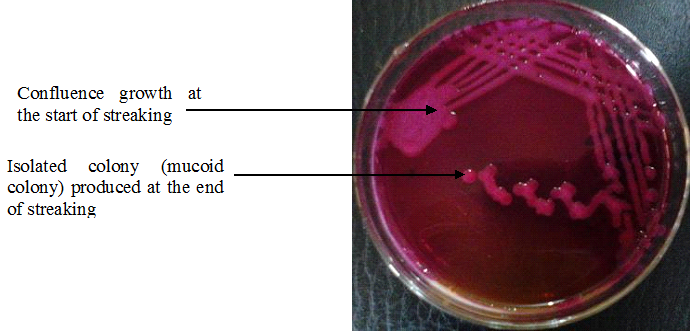Capsules are extracellular polysaccharide (ESP) molecules secreted by bacteria, and which are normally found outside the cell wall of the microbial cell. They are densed and well-defined layers that surround bacterial cells and confer on them some benefits such as resistance to unfavorable conditions (Figure 1). Capsules perform several biological functions in bacteria. Some of the functions of capsules in microbial cells (bacteria in particular) are as follows:
- Capsules protect bacteria from phagocytosis.
- They play a role in the pathogenicity and invasiveness of pathogenic bacteria.
- Capsules protect bacteria from desiccation or drying in their natural environment because they contain water.
The presence of capsule in bacterial cell is identified in the microbiology laboratory by conducting negative staining. In negative staining, bacterial cells are emulsified with Indian ink on a clean glass slide, and the preparation is smeared on the glass by making a thin preparation. The smear is air dried and viewed under a phase-contrast microscopy.

Indian ink and other dyes used for this purpose do not penetrate bacterial capsules, and thus the microbial cell appears to be surrounded by a blue-black background. Capsules are attached firmly to bacterial cell wall and they surround microbial cells a great deal especially bacteria which they protect from adverse effects or shock in their natural habitat.
References
Alberts B, Bray D, Lewis J, Raff M, Roberts K and Watson J.D (2002). The molecular Biology of the Cell. Fourth edition. New York, Garland, USA.
Berg JM, Tymoczko JL, Stryer L (2002). Biochemistry (5th ed.). New York, NY: W. H. Freeman.
Brooks G.F., Butel J.S and Morse S.A (2004). Medical Microbiology, 23rd edition. McGraw Hill Publishers. USA.
Campbell, Neil A.; Brad Williamson; Robin J. Heyden (2006). Biology: Exploring Life. Boston, Massachusetts: Pearson Prentice Hall.
Cooper G.M and Hausman R.E (2004). The cell: A Molecular Approach. Third edition. ASM Press.
Dale J (2003). Molecular genetics of bacteria. Jeremy W. Dale and Simon Park (4th eds.). John Wiley & Sons Ltd, West Sussex, UK. Pp.
Karp, Gerald (2009). Cell and Molecular Biology: Concepts and Experiments. John Wiley & Sons.
Lodish H, Berk A, Matsudaira P, Kaiser C.A, Kreiger M, Scott M.P, Zipursky S.L and Darnell J (2004). Molecular Cell Biology. Fifth edition. Scientific American Books, Freeman, New York, USA.
Madigan M.T., Martinko J.M., Dunlap P.V and Clark D.P (2009). Brock Biology of microorganisms. 12th edition. Pearson Benjamin Cummings Publishers. USA. Pp.795-796.
Maton, Anthea (1997). Cells Building Blocks of Life. New Jersey: Prentice Hall.
Discover more from #1 Microbiology Resource Hub
Subscribe to get the latest posts to your email.


